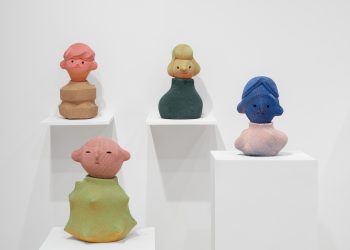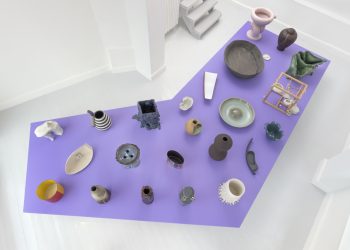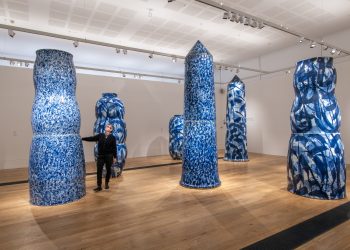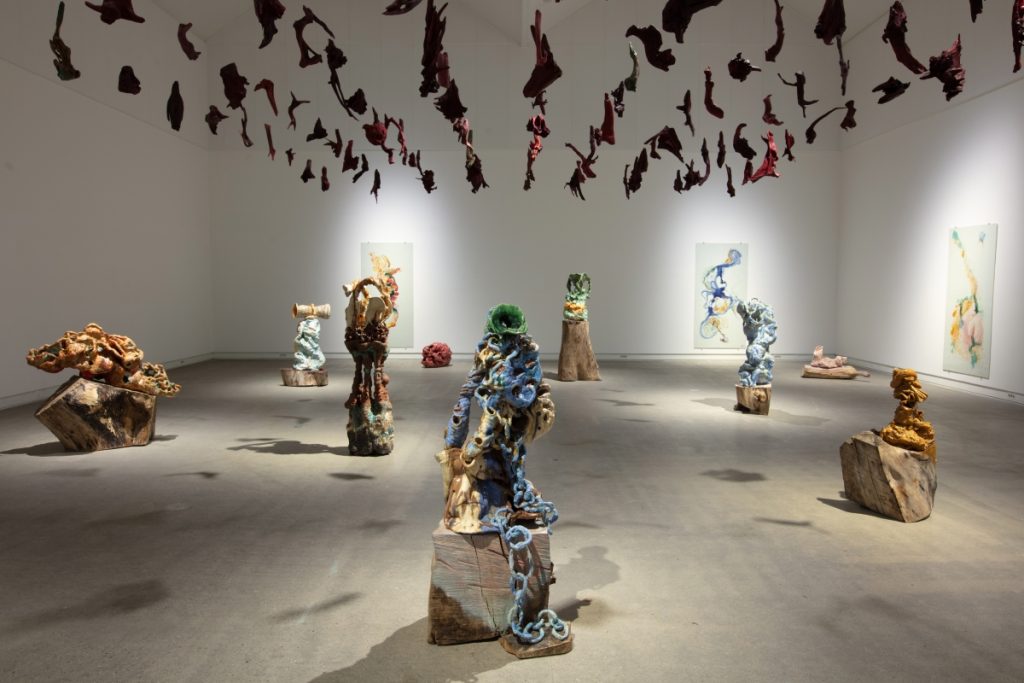
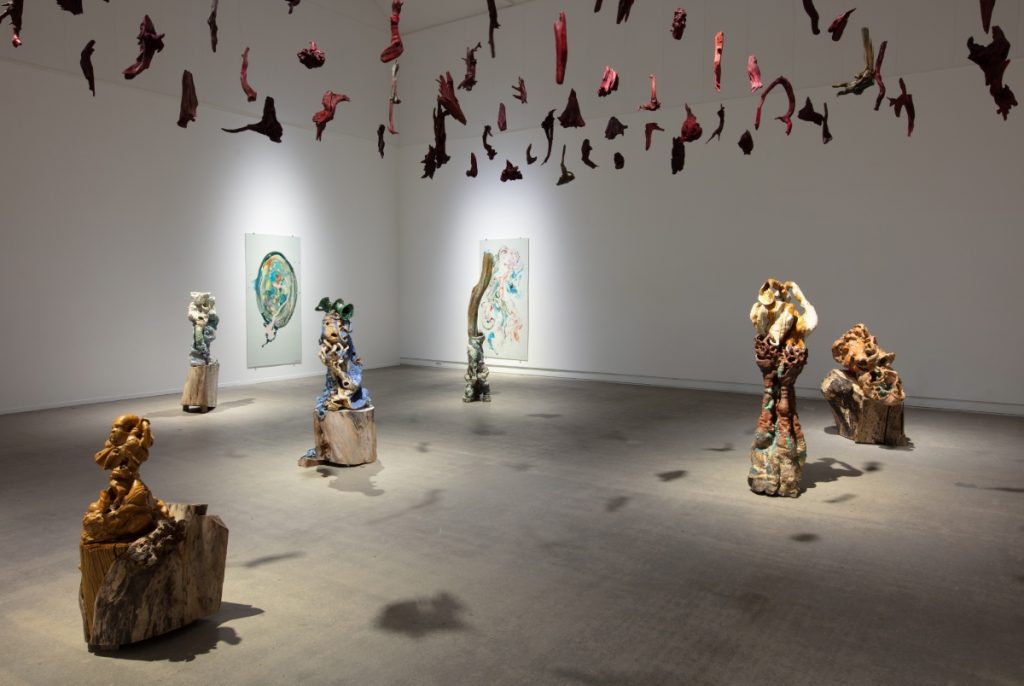
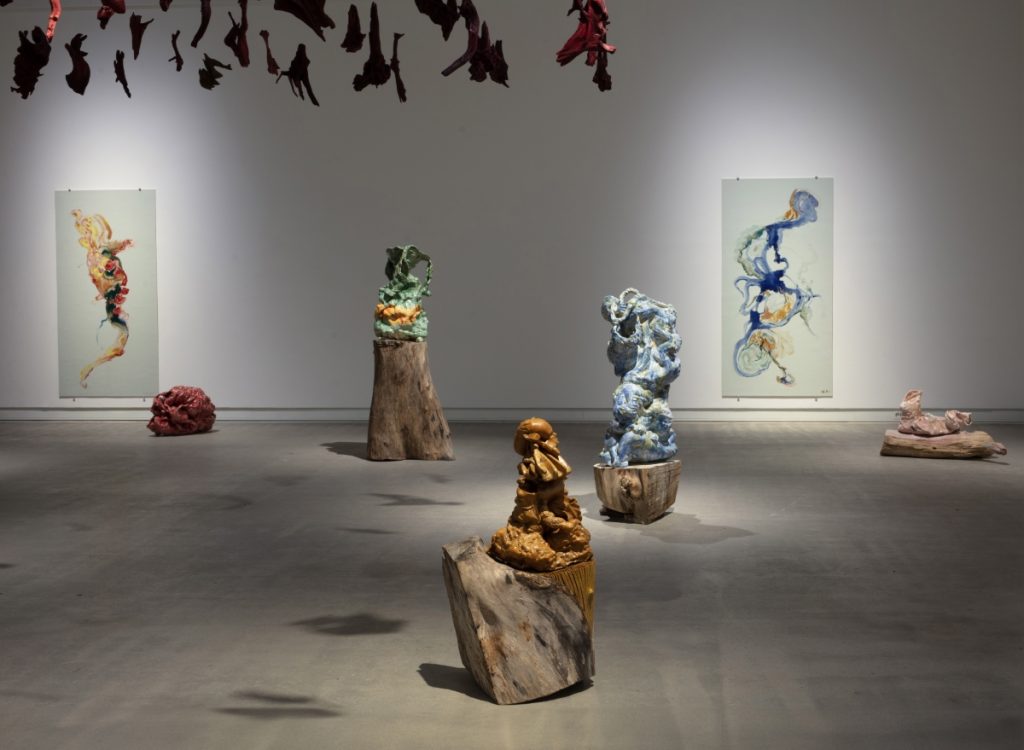

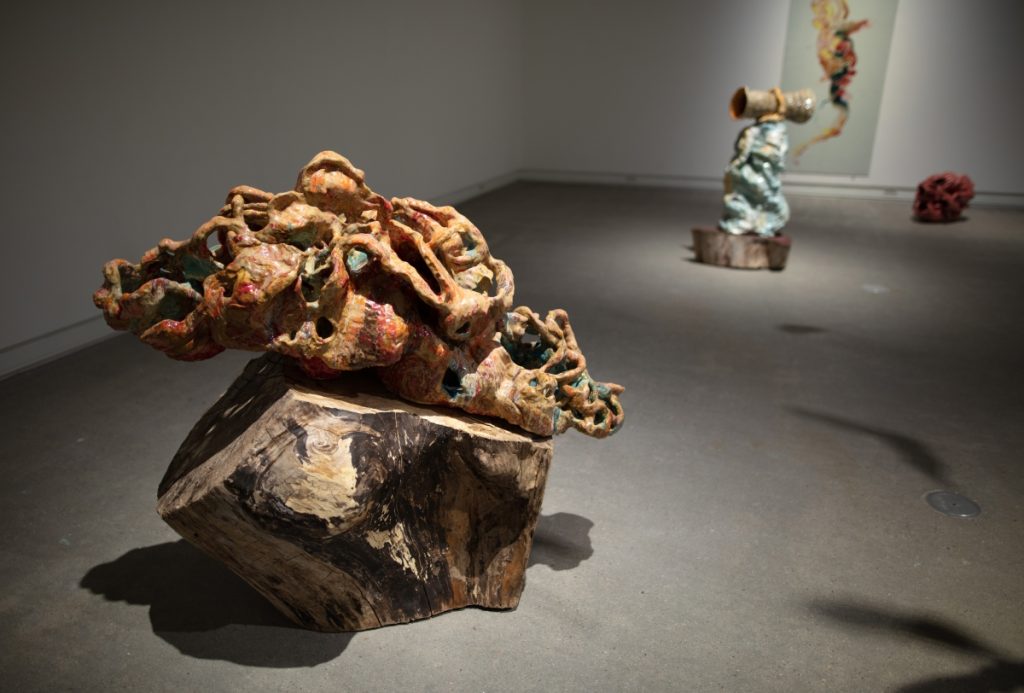
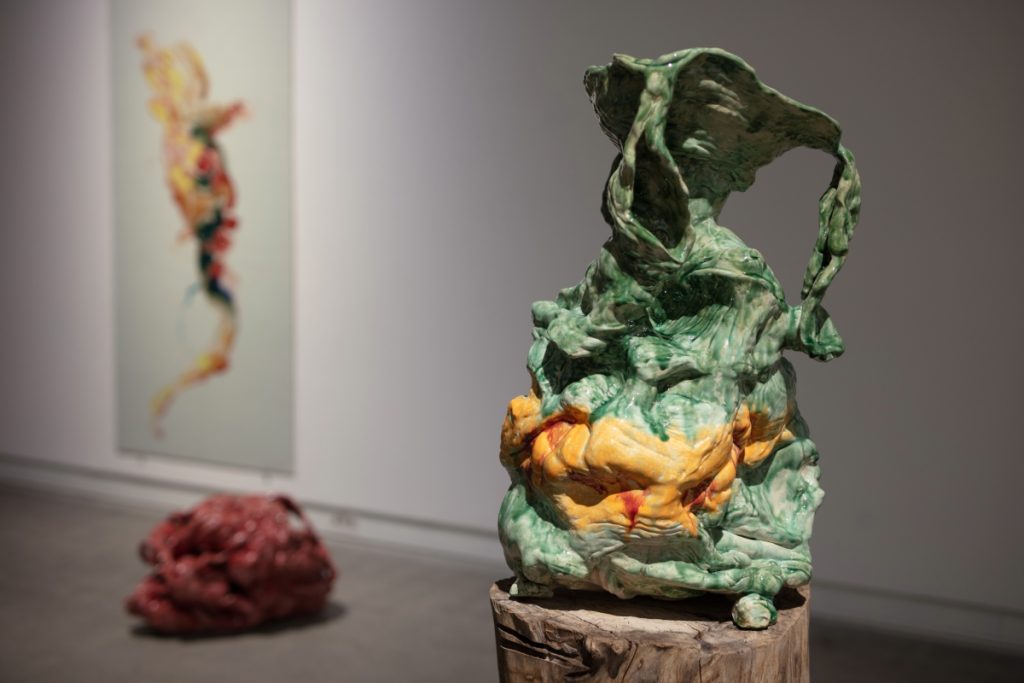
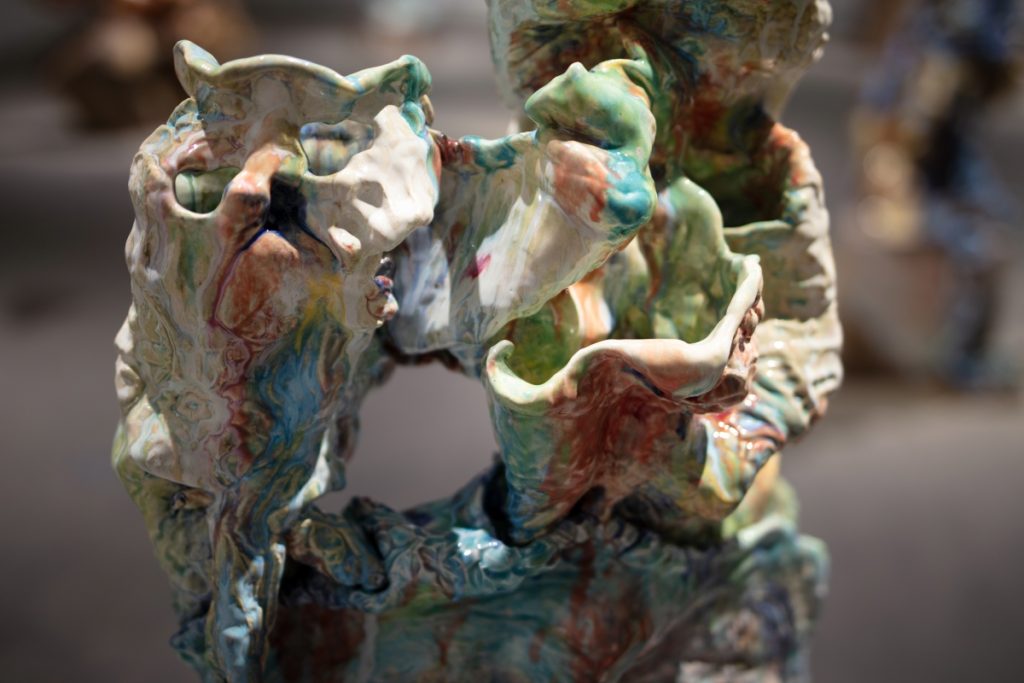
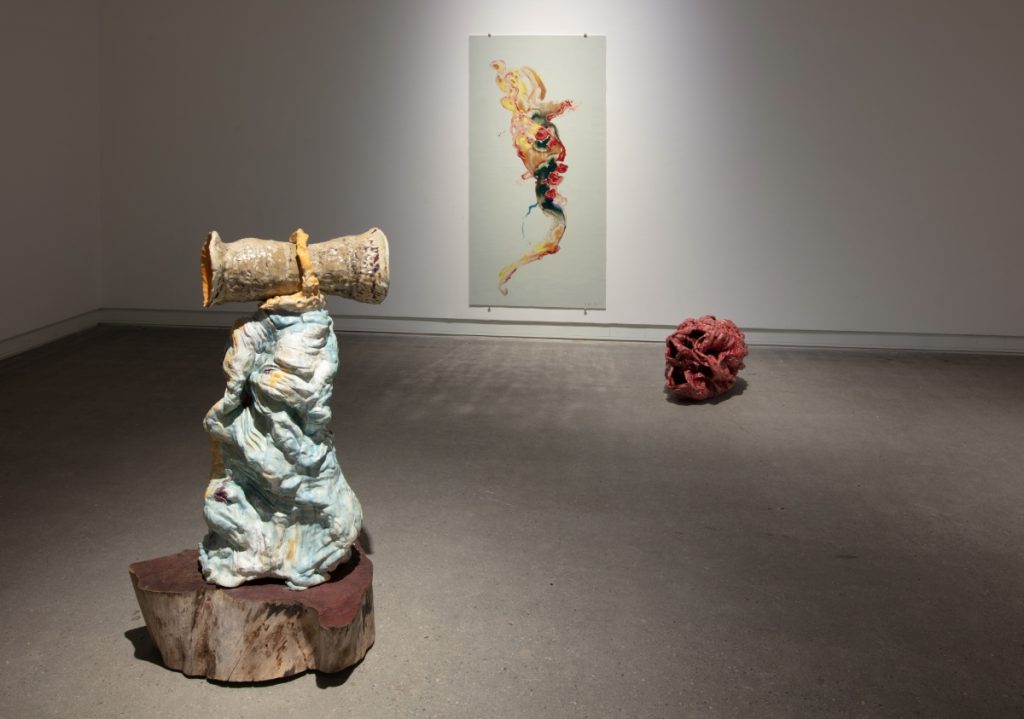
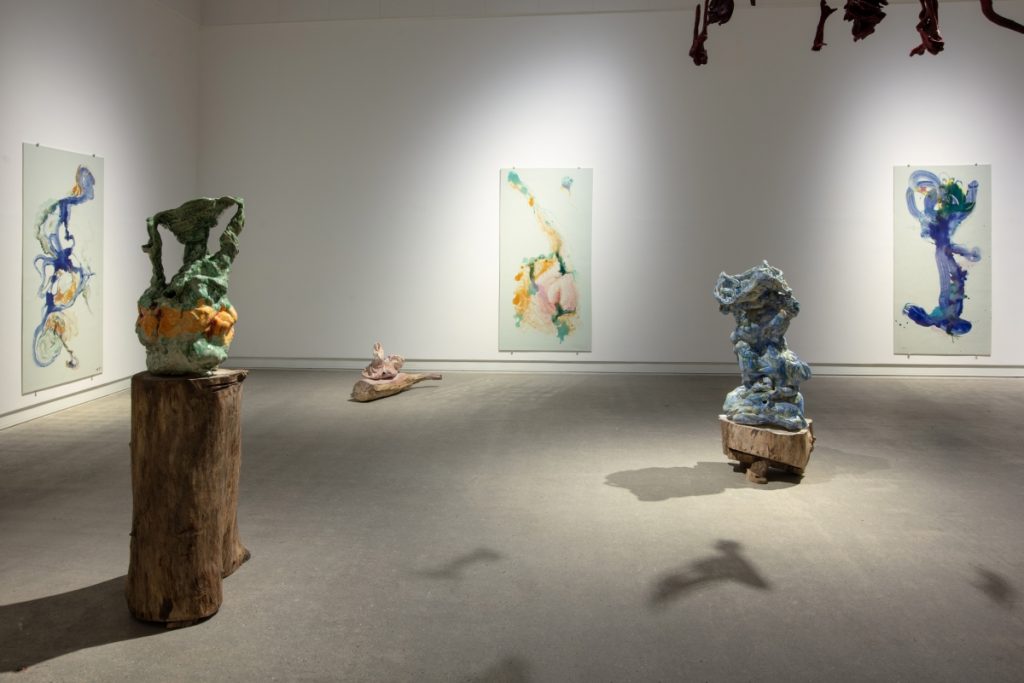
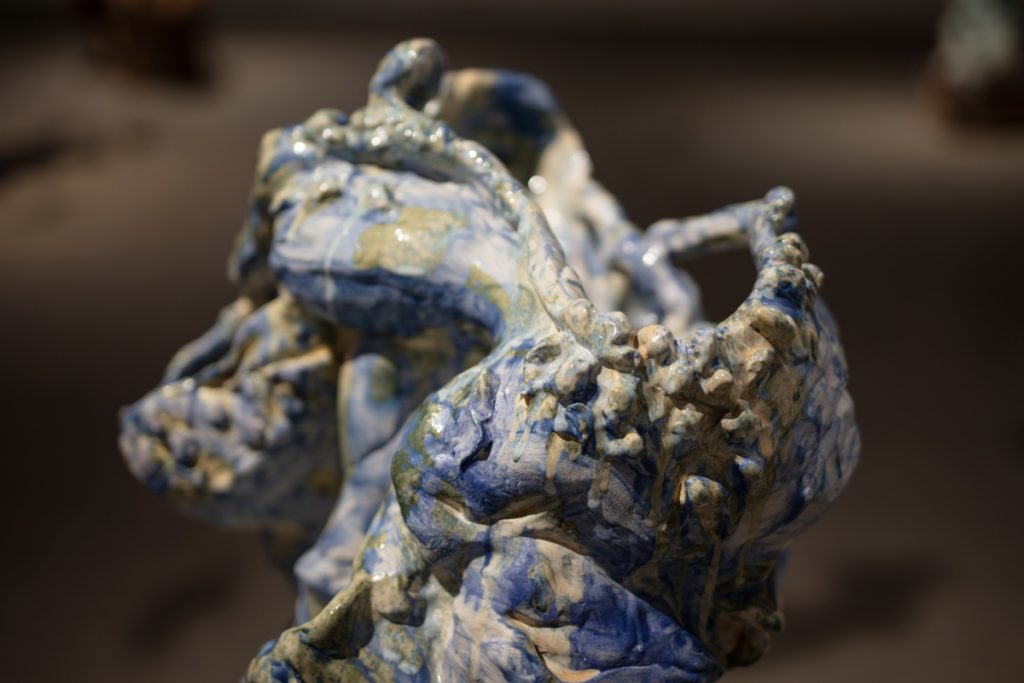
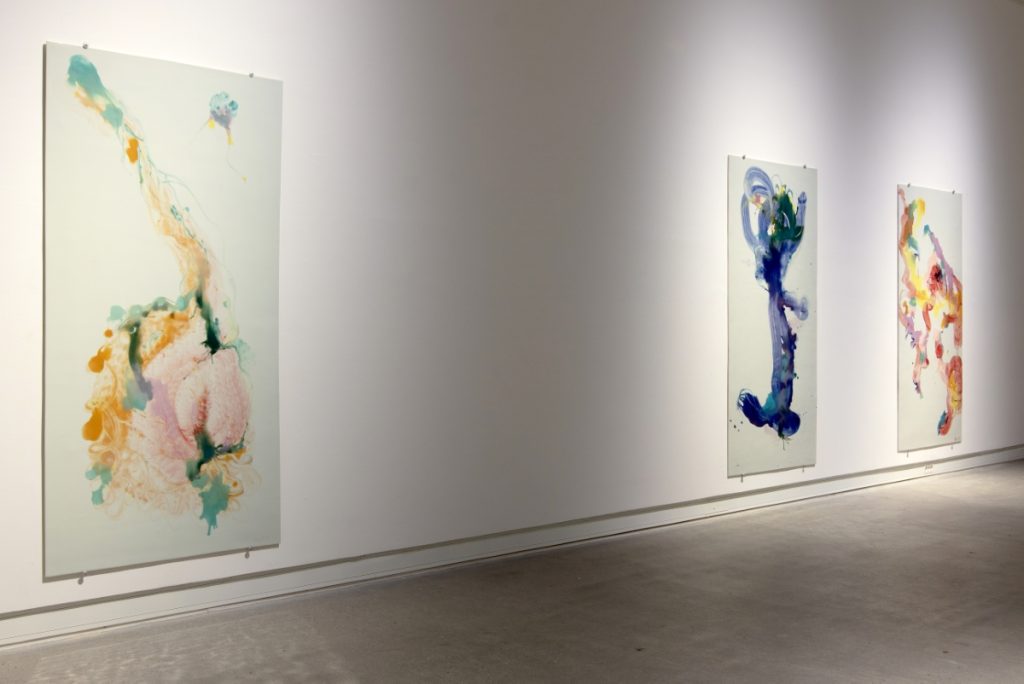
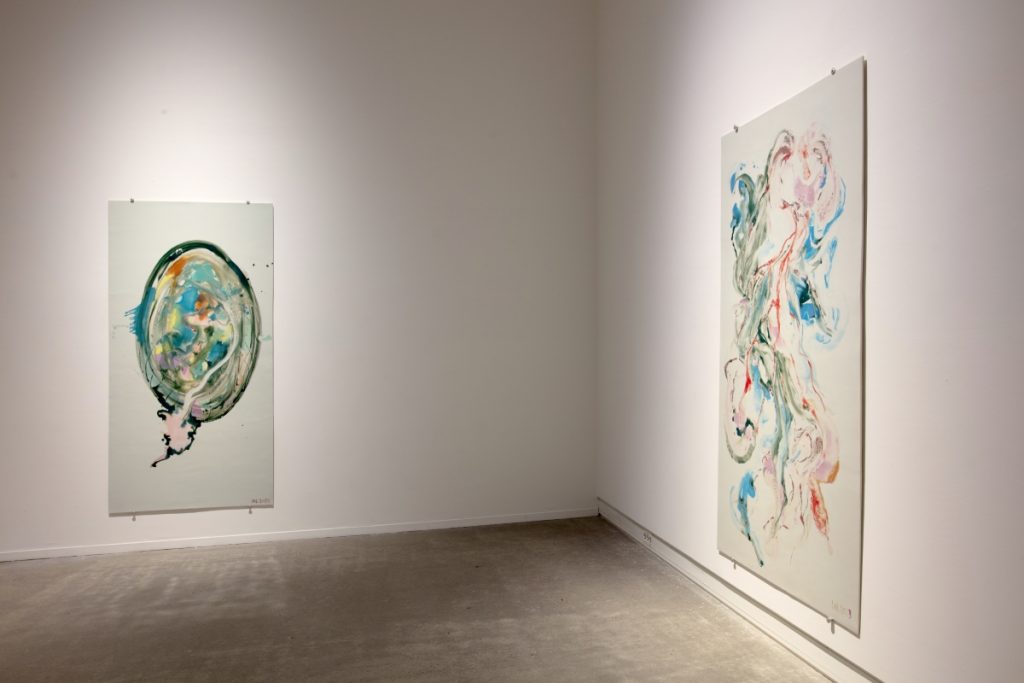
Irene Nordli: ARKANUM is on view at Kunsthall Grenland, Porsgrunn
January 20 – March 17, 2024
Kunsthall Grenland proudly presents a solo exhibition with ceramic works from the artist Irene Nordli. The exhibition entitled ARKANUM is Nordli’s most comprehensive exhibition so far, and will be showcased as a large installation in the exhibition space, a contemplative oasis with opportunities for sensory experiences. Nordli has had a special relationship with the city of Porsgrunn since 1996, when she held a residency at Porsgrunds Porselænsfabrik, as an essential part of her Master’s at the Bergen Academy of the Arts. From 2005 to 2020, several collaborative projects have been emerged between Nordli and Kunsthall Grenland, in the form of exhibitions, workshops, short and longer residencies in Norway, Scandinavian Countries and Kina.
Since 1996, porcelain clay has been Nordli’s most important material. She follows and renews the material’s history and creates her own fragments of narratives. Nordli’s fascination with the material porcelain and the porcelain figure/figurine in particular, acts as a common thread in a long practice. In rich historical material, Nordli finds the starting point for her various artistic projects. The artist’s ceramic practice often deals with the human figure, which forms the very basis for material and conceptual experimentation and which challenges traditional notions of the body and the self.
For the artist, there is no better material to capture the human body and movements than clay. Clay is malleable and particularly suitable for recording and revealing one’s own movements, whether physical, psychological or political. Irene Nordli herself has formulated the following; « My works reflect the beauty and chaos we experience in the world and my works bear witness to my personal experiences and feelings. In my works I search for a deeper explanation of reality and I try to make connections to different human experiences”.
Essay by Toril Redalen
Arkanum can be explained as a deep secret or a mystery. The concept has historical roots and has often been associated with magical traditions, alchemy, and mysticism as something hidden or inexplicable.
Here.
Here in the exhibition, the containers, stumps, roots, and tiles are actual containers, stumps, roots, and tiles. But they are also bodies, houses, forests, and places. They are situations. Situations that are imbued with your body, your house, your forest, and your place when you enter the room. When Irene builds containers, she works on both the inside and outside simultaneously. Physically, she builds and processes the outside and inside of a container. She encapsulates an empty space. She fills the room. At the same time, it is also about every minute of an external process and realizing an internal fantasy, embodying a part of herself through the materials.
We ceramic artists work differently within an inherited tradition, technical knowledge we have learned from others or ourselves. Knowledge we have sought, experiences we have gained. As artists, we share the understanding that at some point in the creative process, we must let go. Irene says, “Creating the containers is like a discovery that I don’t know in advance where it will take me. In each one of them, I incorporate movements, rhythms, colours, and traces that are burned in and become enduring. These containers have their own logic, and the goal is for them to build themselves in a way.”
I have thought about it.
In the work of art, the intuitive is a kind of invisible force. Can intuition be a kind of arcanum? The French philosopher Henri Bergson (1859-1941) was known for his work in the philosophy of life and vitalism. He focused on time as a central concept and how it is experienced in our inner lives. Bergson introduced the concept of intuition as a form of non-rational knowledge, arguing for the existence of a vital life force called “élan vital” that governs the development of the order of life. He believed art could provide insight into the deeper layers of reality. Both intuition and arcanum have roots in the hidden, the deep, and the inexplicable. I can see these two concepts linked through a kind of profound knowledge that goes beyond our understanding. Intuition is an immediate understanding of something, a feeling or insight not based on logic or analysis. Arcanum refers to a kind of hidden or secret knowledge; in alchemy, this knowledge is described as the understanding of a universal essence extracted in a quest for answers. In this exhibition, I experience both intuition and arcanum as something touching on a deeper understanding or insight that goes beyond what can be expressed directly. Both terms suggest access to a form of wisdom not easily accessible to prevailing thought, hinting that reason or truth may be found in the hidden.
Here.
In the way Irene works and in what she creates, I see that intuition leads in, explores the hidden, the inherently inexplicable, and the obvious. In herself, in the material, but also in a larger imperceptible world she is a part of.
And right now, the world is on fire.
It has been for a long time, but now it’s in the middle of the living room. People around the fire. Those who live and reside in rooms without walls. Burning, eating what they find. There. Where time is set back in real-time. In the exhibition “Arkanum,” Irene Nordli has built her own community. She says, “In the container, there is also the empty space. Cavities that the human body also has. A cavity where people you have lost still breathe.” In the art hall, it’s as if parts of the walls are loose. Large porcelain tiles lean against the walls. It seems as if they mirror what is happening in the room.
The room with the containers, stumps, roots, and tiles.
The room with bodies, houses, forests, and places.
Irene Nordli (1967) is considered one of the most vital and central artists on the Nordic contemporary ceramic scene. She is educated at KHIB in Bergen and held a professorship at KHIO. Nordli can show a number of exhibitions at home and abroad, Bomuldsfabriken Kunsthall, KODE, Gallery F15, Beijing Art Fair, SOFA in Chicago. An important part of Nordli’s practice is art in public space, such as at Asker Kulturhus, Lillestrøm citycentre, Halden prison, Mesterfjellet school and Bodø VGS. Her works can be found in collections such as; Nasjonalmuseet, Nordenfjeldske Kunstindustrimuseum, KODE Bergen and Sørlandets Kunstmuseum.
Contact
post@kunsthallgrenland.no
Kunsthall Grenland
Storgata 164
3915 Porsgrunn
Norway
Photos by Håvard Johansen



